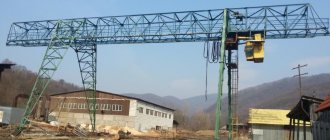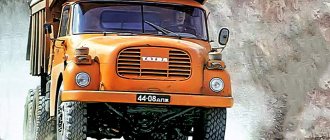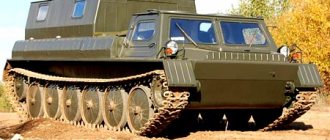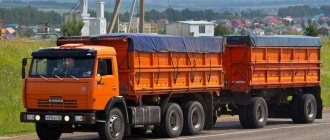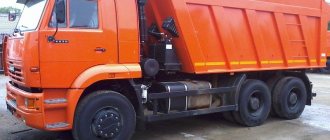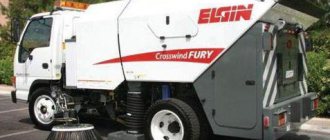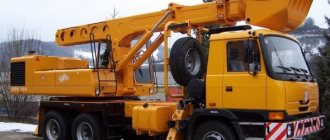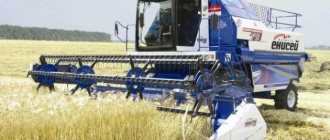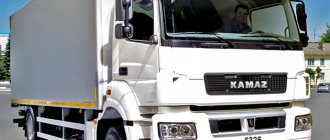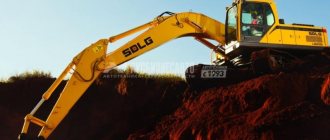In modern warehouses, saving space, storage conditions and movement of goods are among the most important issues. After all, any business owner will not want to pay extra for space that is not being used efficiently. Warehouses try to use all available space, so they optimize the storage area, increasing it through various racking systems.
When performing any warehouse work, the speed of the work, its accuracy and the coherence of the actions of various mechanisms are very important. It is clear that cargo in a warehouse must not only be delivered and moved, but also quickly removed, and then sent to a certain point. All actions must be carried out safely for cargo and personnel in the shortest possible time period. It is for the purpose of ensuring the safety of storage, movement, and speed of execution of these processes that various warehouse equipment is used. It has special requirements: the equipment must move quickly, be safe, convenient and easy to operate, and be highly functional and economical. All movements usually take place in a large space, so issues of mobility and maneuverability of warehouse equipment are important. Read below to learn about the different types of warehouse equipment.
Supply of a self-propelled electric stacker for the warehouse of JSC SEZ PPT Lipetsk LLC LAM WESTON BELAYA DACHA
Warehouse equipment - its main types
Various methods of processing goods are organized in warehouses: during loading and unloading operations, placement of goods, their selection and packaging. Warehouse equipment is selected depending on a number of factors: cargo turnover, type of work performed, number of employees, dimensions of racking systems and their types, weight of goods and many others, which allows optimizing work time and reducing the burden on staff. Warehouse equipment can be divided into several types:
- Diesel forklifts.
- Electric forklifts.
- Gasoline forklifts.
- Gas and petrol forklifts.
- Manual and electric stackers.
- Self-propelled stackers.
- Reach trucks and much more.
Supply of an all-terrain forklift (bigfoot) HELI CPCD30 for the Borinsky Sugar warehouse.
Of course, this is far from a complete list of warehouse equipment that can be used by enterprises for loading, loading and unloading operations, moving goods and storing them. Pallet carriers, barrel tilters, reach trucks, order pickers and a number of other equipment are also used. For small warehouses with low cargo turnover, warehouse equipment is selected individually. In some cases, you can get by with a hydraulic trolley (rocla) and a manual hydraulic stacker. It is necessary to take into account a number of factors: weight of the load, lifting height of the load, overall dimensions of the equipment and many others.
How to choose the right manufacturer?
Take another look at the impressive list of companies above. What to choose: Caterpillar or Toyota? STILL or Hyndai? And if it is decided that it is necessary to buy from the Chinese, then from whom exactly?
It is very difficult to rely on the subjectivity of supply managers - everyone will try to sell you the equipment that they are personally interested in selling, and what exactly this interest is based on is anyone’s guess. How to figure it out on your own?
To find the right answer to this question, analyze the specifics of your enterprise, talk with colleagues working in similar conditions, and ask for their recommendations.
Next, one of the significant indicators is the “length of the loader line” for each company. For example, CVS Ferrari (Italy) has 14 forklifts, and Clark (USA) has about 60. The leaders in this indicator are Mitsubishi (Japan), Linde (Germany) and Heli (China) (about 100 types of forklifts). loaders each), Hundai Heavy Industries Ltd. (more than 130) and Komatsu (about 150).
Of course, significant factors when choosing equipment are the period of continuous operation, warranty conditions, availability and price of consumables, and other operating costs must be taken into account.
Pallet carriers are their main device
Pallet carriers (electric pallets) are a type of warehouse equipment designed for transporting goods over long distances. Pallet carriers are used at warehouse and logistics terminals, in large hypermarkets with large turnover. Pallet carriers are capable of transporting cargo weighing up to 5 tons.
Pallet carriers consist of the following main elements:
- Forks for grabbing and lifting loads.
- Electric motor.
- Rechargeable battery.
- Pneumatic or cast wheels.
- Control Panel.
Supply of Pramac pallet carriers for Edelweiss L LLC.
Pallet carriers are equipped with an additional platform for the operator. The average load capacity of modern pallet carriers is 1.5 - 3 tons, and the lifting height of pallets is from 12 to 20 cm. The main advantages of pallet carriers are their low price, ease of use and maneuverability.
Not simple, but fork
A forklift is one of the types of special warehouse floor equipment designed for loading, moving, unloading and storing heavy and bulky cargo.
The name of the loader speaks for itself: the main working part of the loader is the forks. The length of the forks depends on the type of pallets used, from 700 to 1200 mm. When choosing a fork size, you need to consider the width of the work loader. If the fork length of the loader is not sufficient, you can order attachments or fork extensions - there are many such offers on the market.
Loaders - their main types
It is almost impossible to imagine the operation of a large warehouse without forklifts. The main division of this warehouse equipment is its dependence on the power source. In particular, there are diesel, gasoline, gas-gasoline and electric forklifts. Their name makes it clear where they get the energy to carry out their work (diesel fuel, gasoline and electricity).
It is worth noting that forklifts often work not only in the warehouse itself, but also outside it. Therefore, forklifts are often equipped with additional equipment for work outside the warehouse: cabins with installed air conditioning, which helps to carry out loading and unloading operations in the coldest or hottest seasons.
Electric forklifts are a type of warehouse equipment designed for handling cargo (moving and storing) in closed warehouses, as well as in food and pharmaceutical industries, refrigerated warehouses, agricultural warehouses and many others. The main advantages of electric forklifts are their environmental friendliness, efficiency, and reliability. Electric forklifts have a low load capacity (compared to forklifts with internal combustion engines) - up to 7 tons and a fork lift height of up to 6 meters. Electric forklifts are equipped with capacitive batteries, which allow them to operate without recharging during a work shift.
Diesel, gasoline, gas and gasoline forklifts are designed to work in a well-ventilated area. Compared to electric forklifts, forklifts with an internal combustion engine (LDC) have a higher lifting capacity, which reaches 50 tons. The main advantages of this technology are their reliability, power, the ability to work for a long time without recharging, and are not picky about the road surface.
A diesel forklift consists of the following main elements:
- Outer (1) and inner (2) sections of the lifting frame.
- Lifting chain (3) and cylinder (4).
- Load protection grid (5).
- Fork stopper (6).
- Carriage (7).
- Fork teeth (8).
- Drive (9) and steered (10) wheels.
- Fuel tank cap (11).
- Cover (12).
- Tipping cylinder (13).
- Seat (14).
- Steering wheel (15).
- Headlight (16).
- Front (17) and rear (19) combination lamps.
- Counterweight (20).
Classification of forklifts by warehouse type
Different types of forklifts are suitable for different warehouses and the work planned there. The following factors influence the choice of loader:
- Where is the warehouse located - outdoors or indoors?
Electric forklifts are more suitable for working in confined spaces. For outdoor use, the best option is diesel or gasoline. This is due to the fact that the engines of forklifts emit harmful gases during operation, which are not ventilated indoors and can become a threat to the lives of employees.
- floor surface
To work on uneven floor surfaces, forklifts with pneumatic tires are chosen. Solid tires are the ideal choice for flat floors and are very durable.
- distance between racks
If the aisles between the rows are narrow, pay attention to stackers - this is one of the types of lifting equipment. The stacker is more compact than a forklift and therefore will go where a forklift cannot. However, because of this, the height and volume of the loads lifted are less.
- shelving height
To choose the appropriate forklift model, determine the highest point in the warehouse where you will need to transport and lift the load and add another five meters to this - it is better to take it with a small margin.
- maximum cargo weight and dimensions
Loaders have different load capacities. The principle here is the same as with height - calculate the maximum weight of the cargo that you plan to move and add a few more kilograms or hundreds of kilograms to it if the cargo in the warehouse is heavy.
- what kind of cargo will be transported
When choosing a loader drive - electric, gasoline, gas or diesel, consider what products are stored in the warehouse. If we are talking about food products without sealed containers, medicines or children's products, then models running on diesel or gasoline are not suitable. Many people neglect this rule, making a serious mistake.
If contact with flammable goods is expected, the forklift must be equipped with a fire protection system.
- work intensity
If the forklift will be used frequently, study its maneuverability - minimum turning radius, travel dimensions (with and without a load), speed of movement, lifting and lowering loads, battery capacity or fuel consumption.
Reach trucks - scope and types
A reach truck is an electric stacker that is equipped with a self-extending mast. The reach truck has good maneuverability, speed, ease of use, and good load capacity.
The reach truck consists of the following main elements:
- Protective cover of the reach truck (protects the driver from falling from a load height).
- Cabin with controls.
- Cargo mast. Masts come in two, three and four sections, depending on the required fork lifting height.
- Forks – for convenience, they are equipped with the option of moving the forks to the side, as well as tilting the forks.
- Load wheel.
- Reach truck battery frame.
- Battery.
- Side support.
- Control compartment.
- Reach truck drive wheel.
Visually, a reach truck is a hybrid of a stacker and a loader. Modern reach trucks have the following characteristics:
- Fork lifting height is from 4 to 12 meters.
- Load capacity up to 3.5 tons.
- Ability to work in narrow spaces (2.7 m wide).
- Good speed performance (up to 15 km/h).
The operator's seat of a reach truck is usually positioned sideways. The average operating time of a modern reach truck is from 5 to 8 hours. Additionally, for ease of operation, the reach truck is equipped with a video surveillance system.
Other types of equipment
When receiving cargo in boxes or bundles, it is placed in pallets , and these, in turn, are placed on racks.
Pallets are convenient because they do not allow damage to the cargo when transporting from place to place and they can be easily transported using a forklift. Also, the standard dimensions of this design allow for more compact storage of products. When loading products by mechanization, standard pallets speed up product processing time.
What pallets are distinguished:
- Flat. You can place goods on them in boxes, crates, bags;
- Rack-mounted. On these pallets you can stack goods in several rows;
- Boxed. The rigid frame allows you to store and move loads. Which can be easily damaged. These pallets have removable and non-removable walls;
- Metal pallets. Used for transporting barrels and other oversized and heavy products.
Since wooden pallets do not last long, it is better to use metal products.
Additional suggestions for optimization
To store small volumes of products, you can use not only shelving, but also industrial furniture . It will allow you to systematize cargo and maintain strict records of various units of goods.
For fast and high-quality transportation of goods, you will need packaging equipment. It allows you not only to store goods in coils, but also to transport them without compromising the integrity of the packaging, without losing small goods.
Warehouse equipment – its additional equipment
Diesel, gasoline, electric, and gas-gasoline loaders are equipped with auxiliary attachments, depending on the work they perform. Additionally, you can purchase the following types of attachments:
- Carriage and fork extensions.
- Positioners with side shift forks.
- Rotators.
- Grabs for loads, including rolls.
- Dumps.
- Crane installations.
- Brush equipment.
- Hydraulically driven reagent spreaders.
- Rotators of boxes and containers.
- Pushers.
- Bunkers (containers).
- Pins (mandrels) for transporting rolled materials, such as linoleum.
- Load stabilizers and much more.
Loader characteristics
Loaders are multifunctional machines that differ in design and principle of operation. However, most of them share a number of common characteristics:
- lifting capacity of equipment,
- type and useful volume of the bucket,
- maximum unloading height,
- normal and special free play,
- performance,
- availability of additional attachments,
- dimensions and weight.
Forklift with internal combustion engine
For full-fledged work, you will definitely need a forklift to carry out work outside the warehouse. Such loaders are usually equipped with gasoline or gas-gasoline engines, as they operate in open, ventilated areas.
Such forklifts will be needed to transport batteries for charging in order to carry out unloading work outside the warehouse. Using this type of equipment you can clear flat areas of snow.
Hand pallet truck (rocla)
This type of trolley got its name from the company. This name has become so popular that now all typical carts are called rokla, or even rokhlya. This technique has become so common in warehouses that it is now difficult to find at least one warehouse that is not equipped with such carts. There are many brands of these carts, and they are all very popular.
According to experts at ustkiev.com, the advantage of hydraulic trolleys is that they are quite unpretentious to use, but at the same time very reliable and durable. Many manufacturers provide a long warranty period for such equipment because it is very reliable.
As practice shows, wheels and rollers most often have to be replaced, but this is easily done by local equipment repair shops. Therefore, it is best not to use nylon coated wheels in warehouses with industrial floors. The most optimal materials for such wheels are polyurethane and vulkolan.
The use of hand rollers and their quantity depends on the quantity and range of goods, as well as turnover. Usually the required number of rolls is calculated based on the number of gates, as well as the number of windows for selectors who collect orders. For each such window, two glass windows are placed.
The price of a regular trolley can be around 200 euros. You can find cheaper ones, but their use is not recommended. Such carts have a lower service life and low reliability.
Self-propelled high-rise electric stacker
One of the most powerful and high-performance machines used for internal warehouse work is the reach truck. Thanks to its functionality, it combines the functions of a stacker and a loader. If lifting speed and high travel speed are important, it makes sense to buy a reach truck.
The reach truck is a very complex piece of equipment, but it is the most productive of all warehouse machines. The reach truck is capable of traveling speeds of up to 12 km/h and climbing speeds of up to 0.6 m/s. The load capacity reaches 2.5 tons, while the reach truck can operate at a height of 11 m.
One of the competitors of reach trucks is narrow-aisle stackers. But they can only move straight, without turning in the aisle. The carriage rotates 180° and moves to the edge of the rack. This makes it possible to turn the load in different directions and push it deeper.
Narrow aisle technology is very complex to design and implement, and therefore more expensive than other systems. Based on the type of product and the speed of its turnover, the need for warehouse equipment is identified when designing a warehouse. On average, it is assumed that one stacker is capable of handling 1500 m2 of warehouse space.
